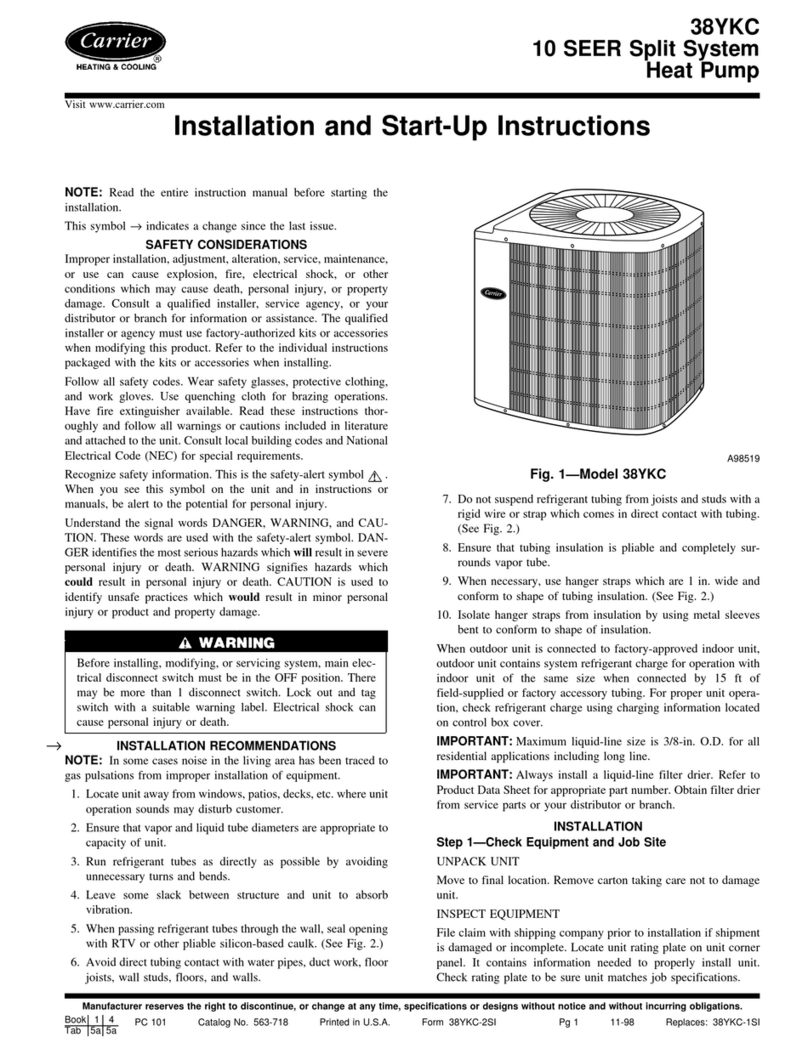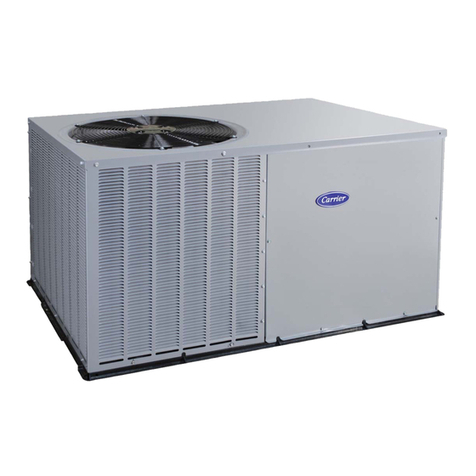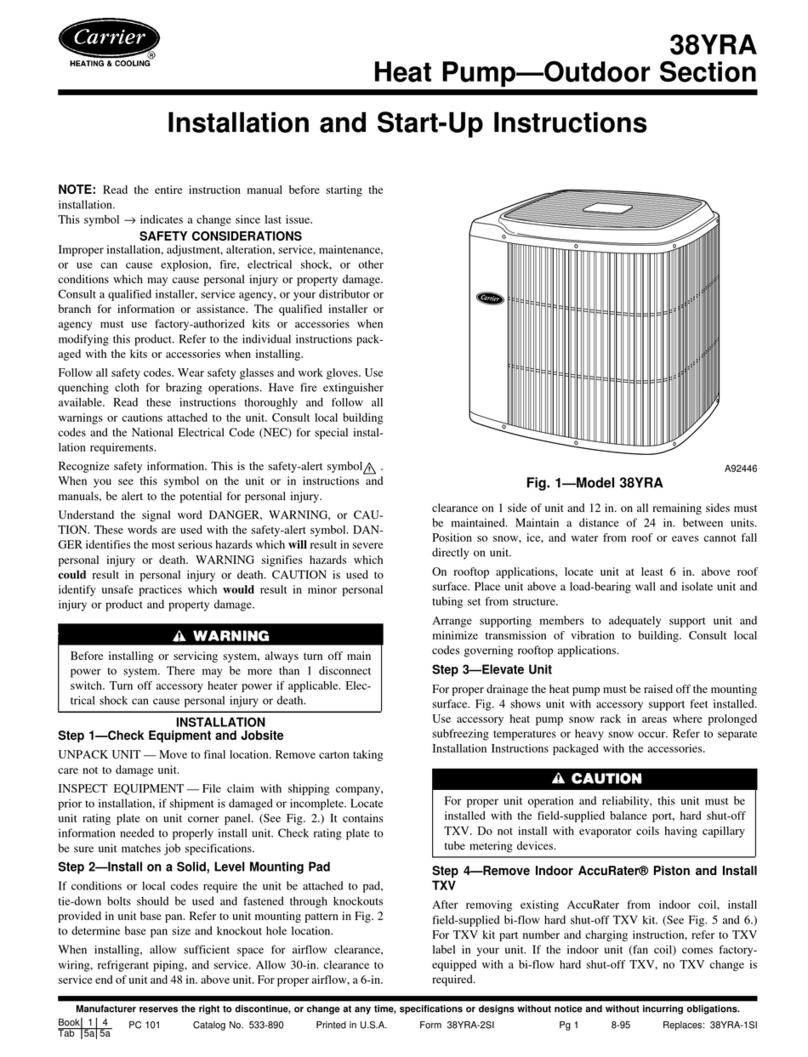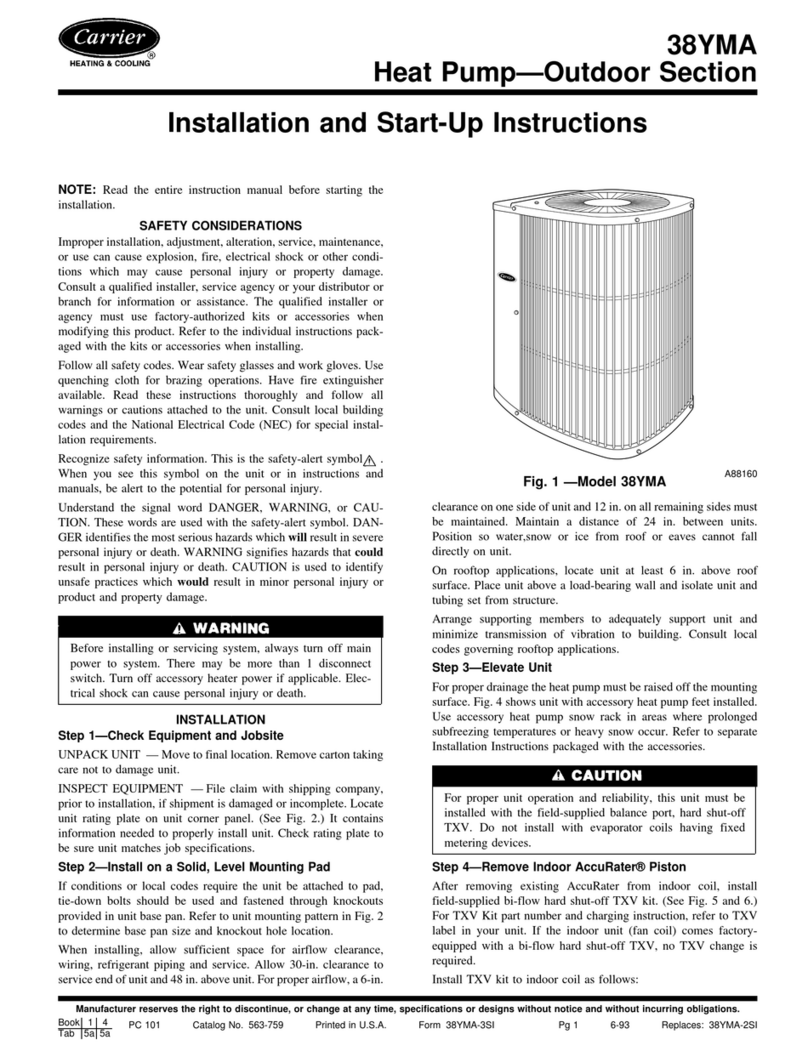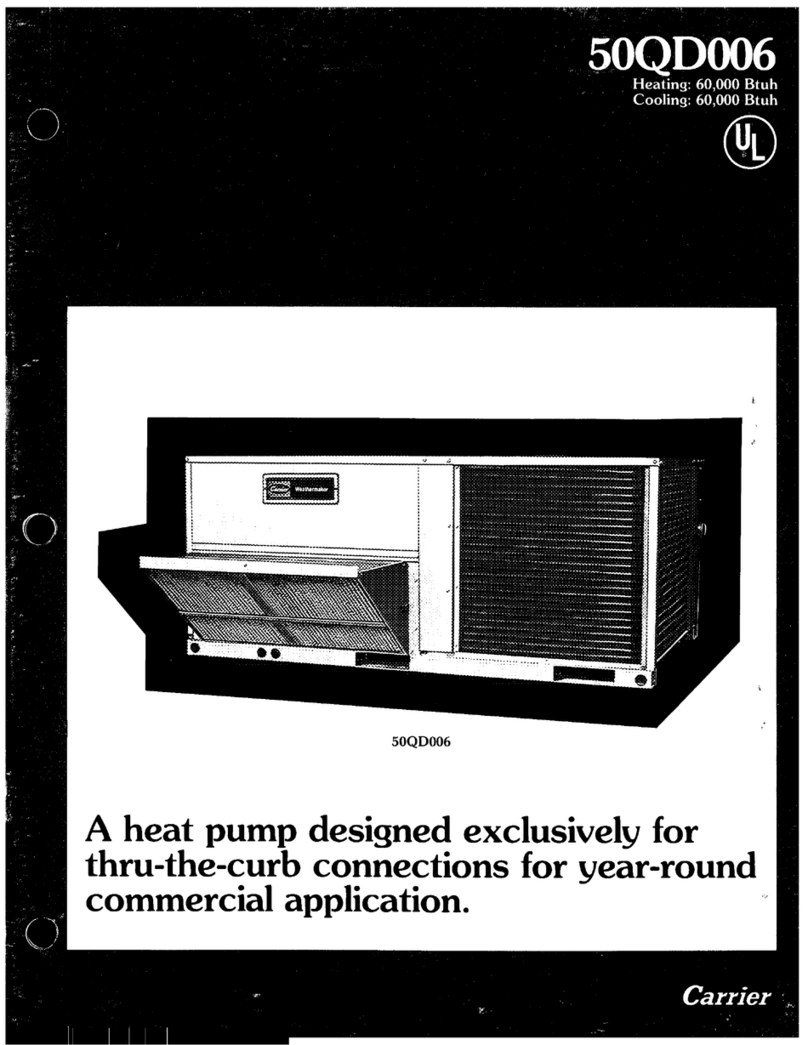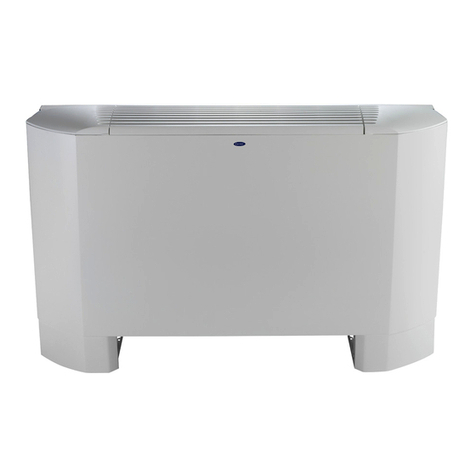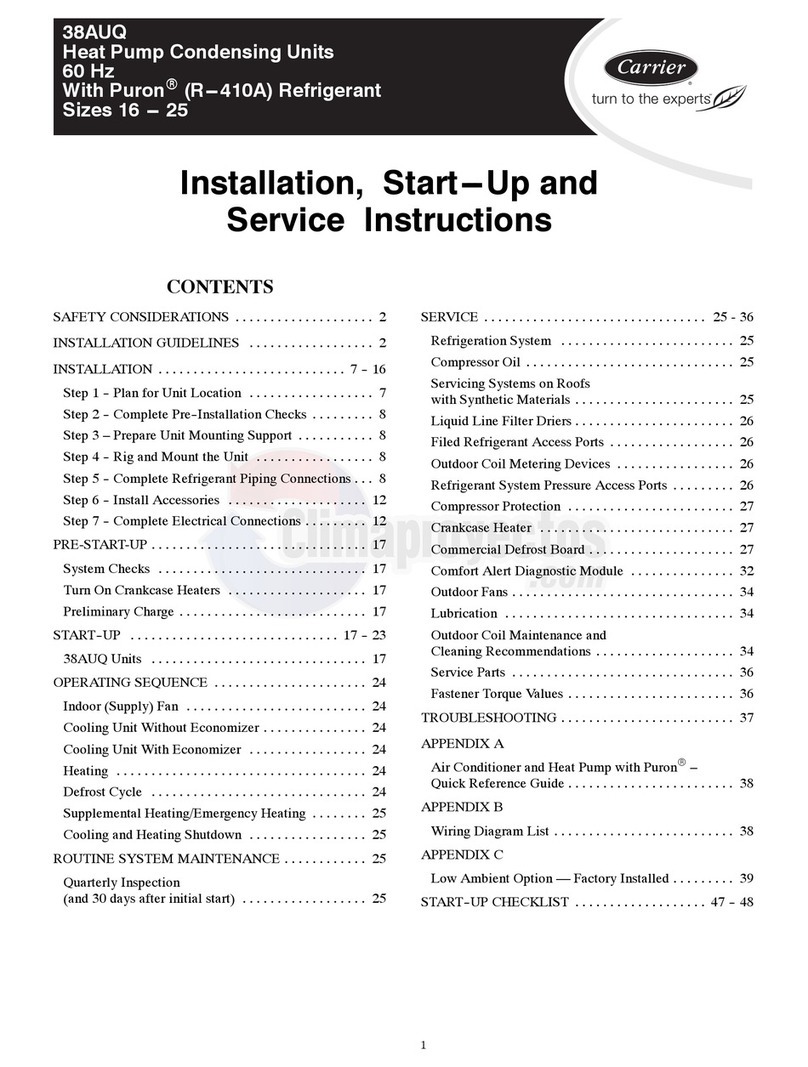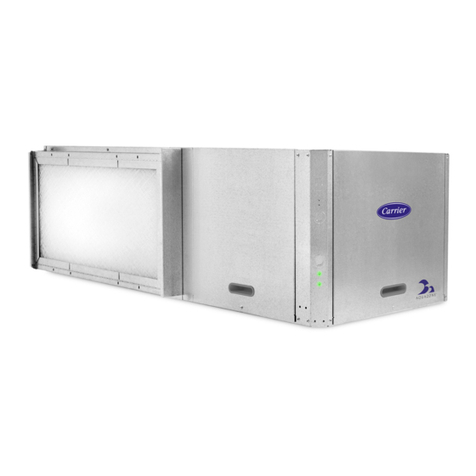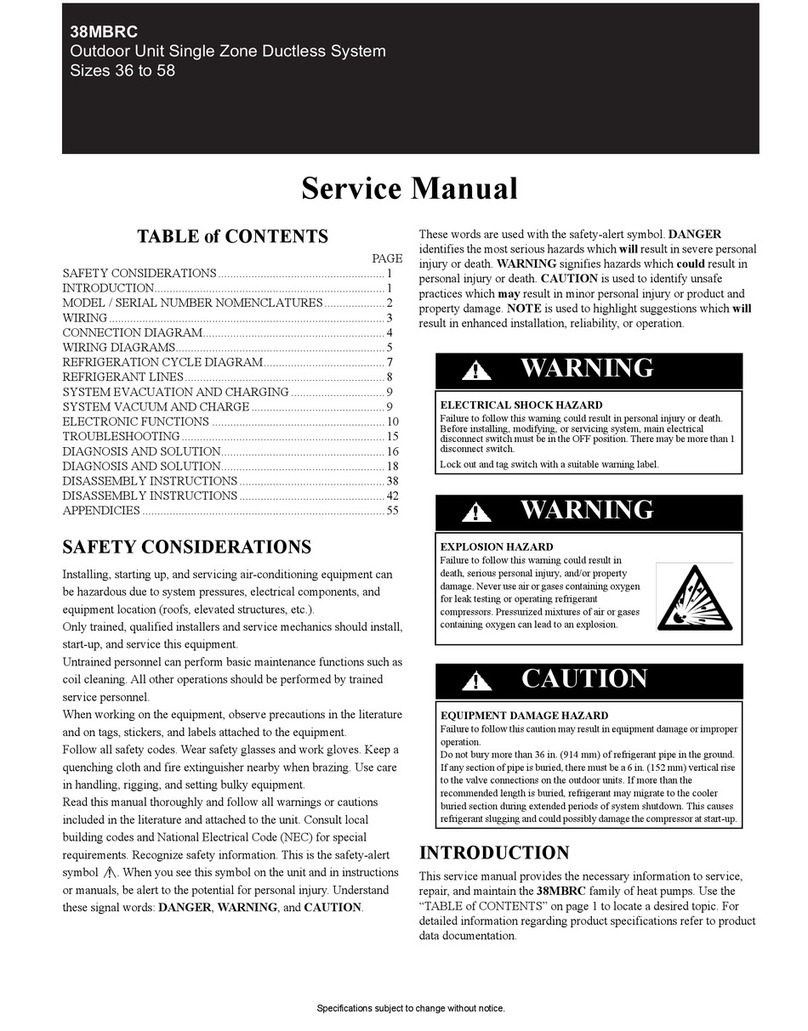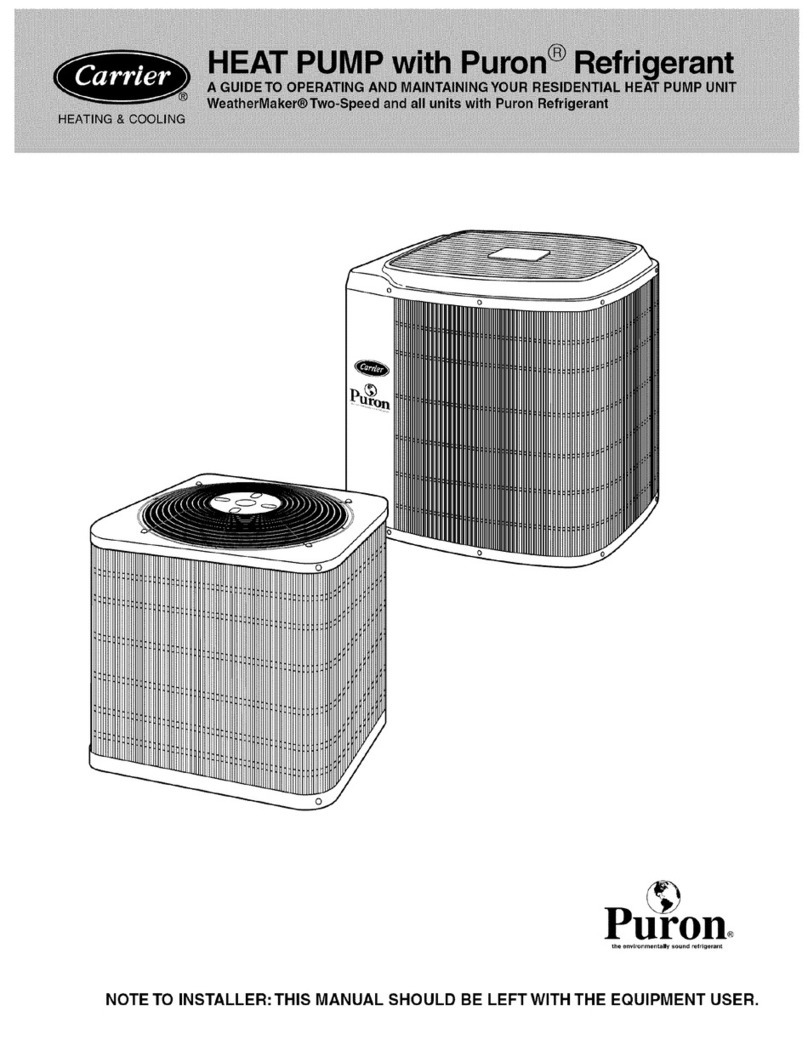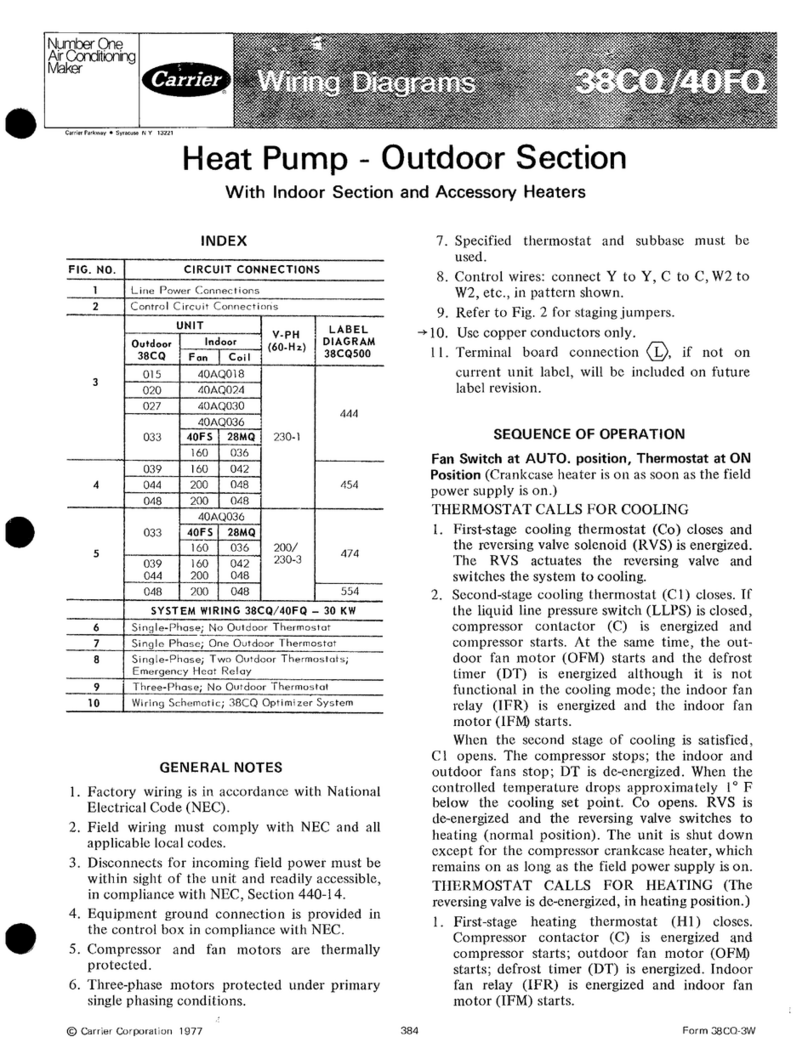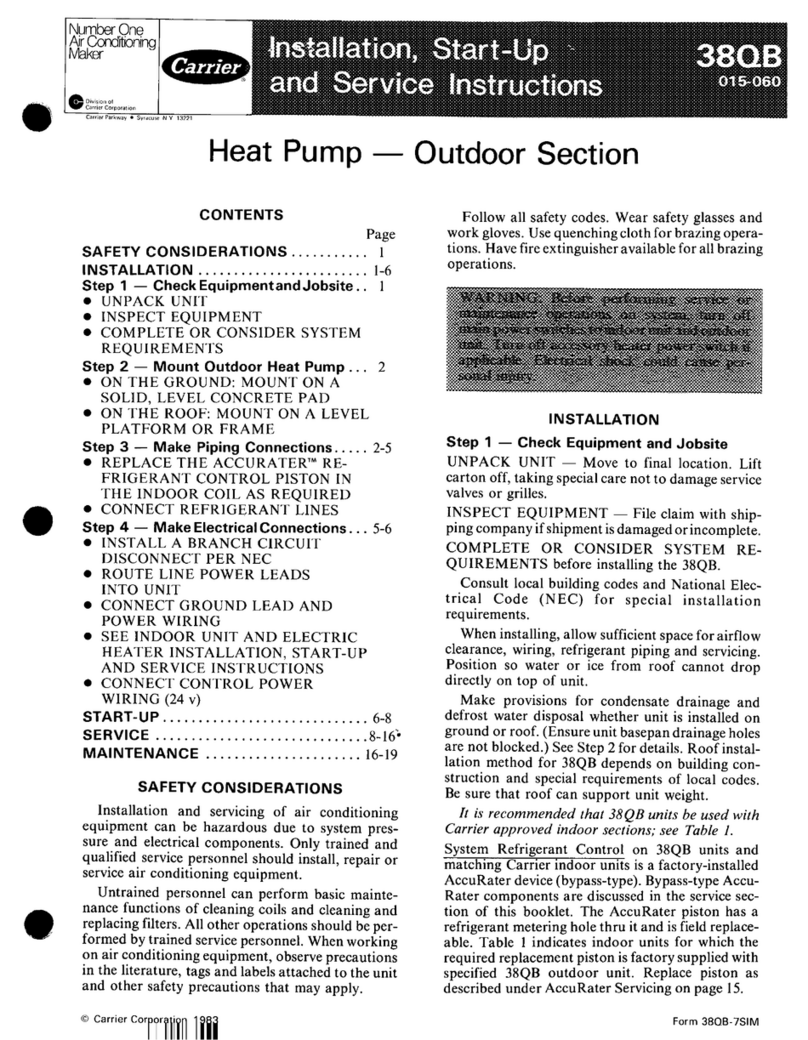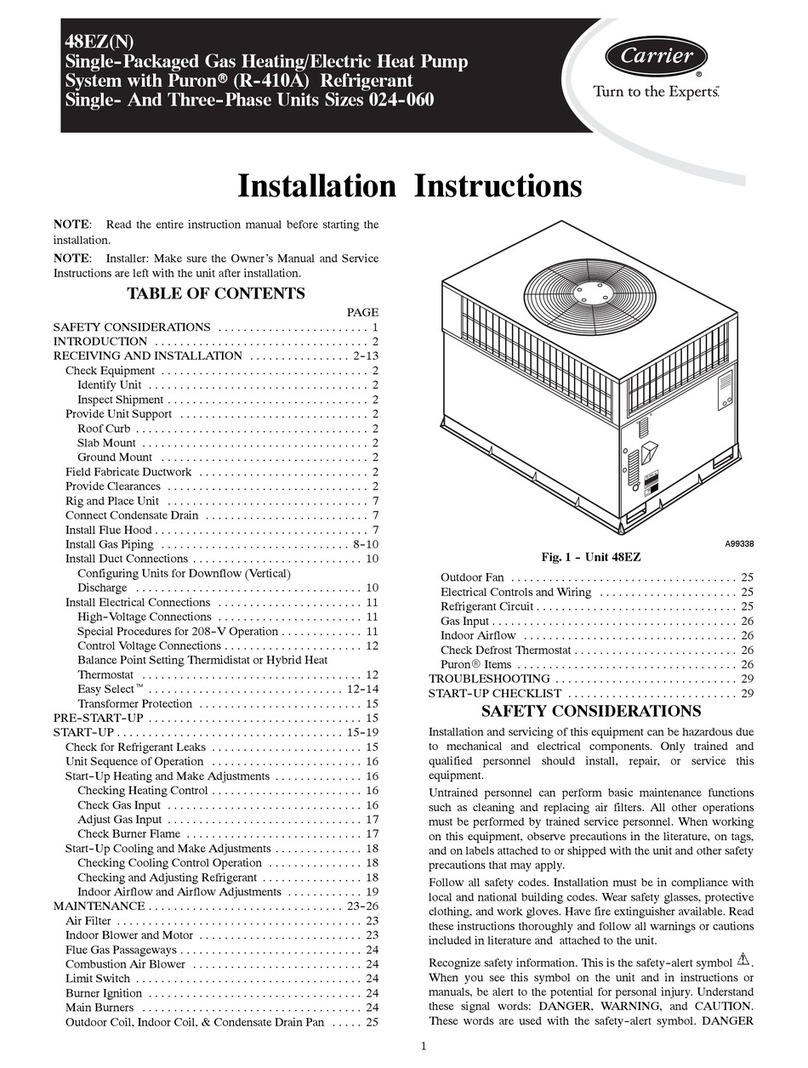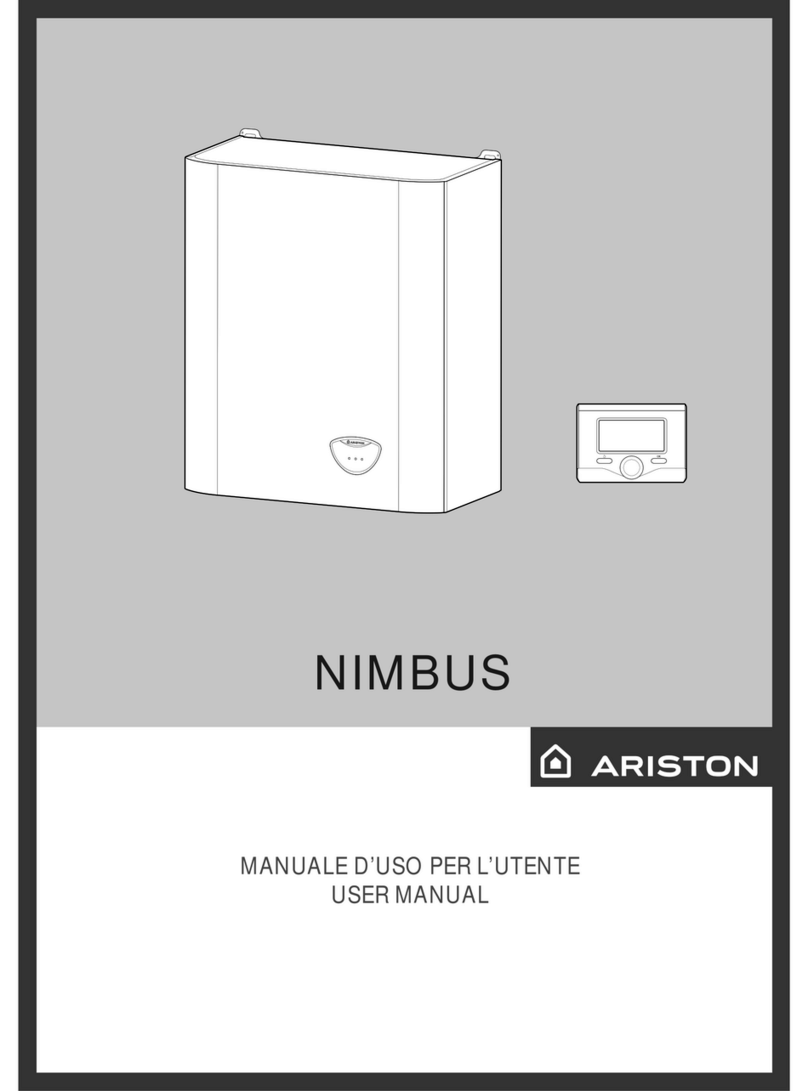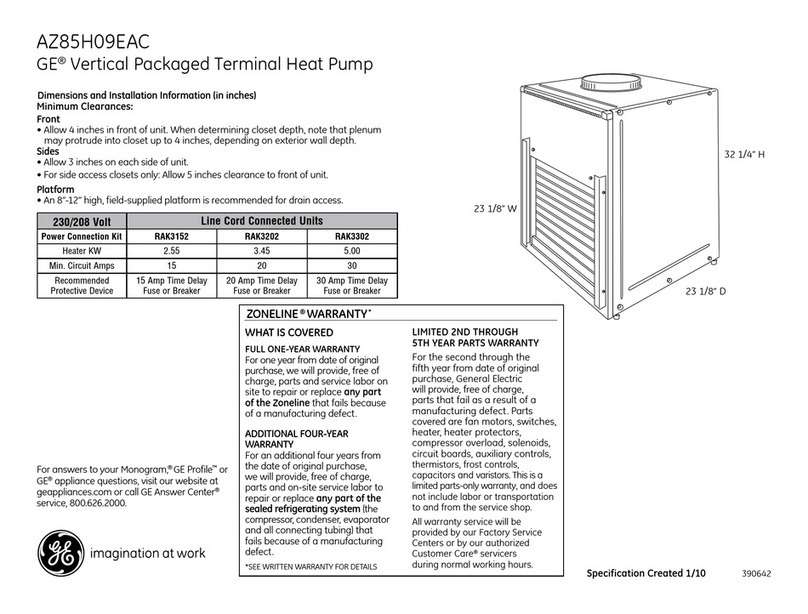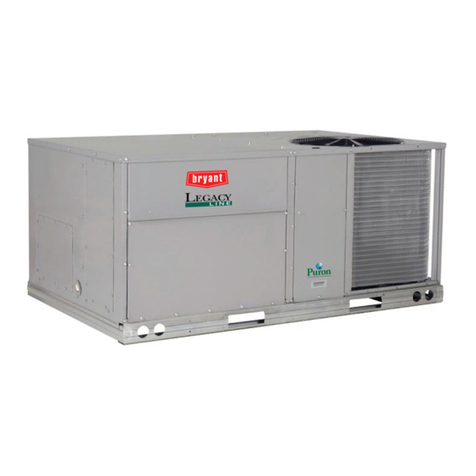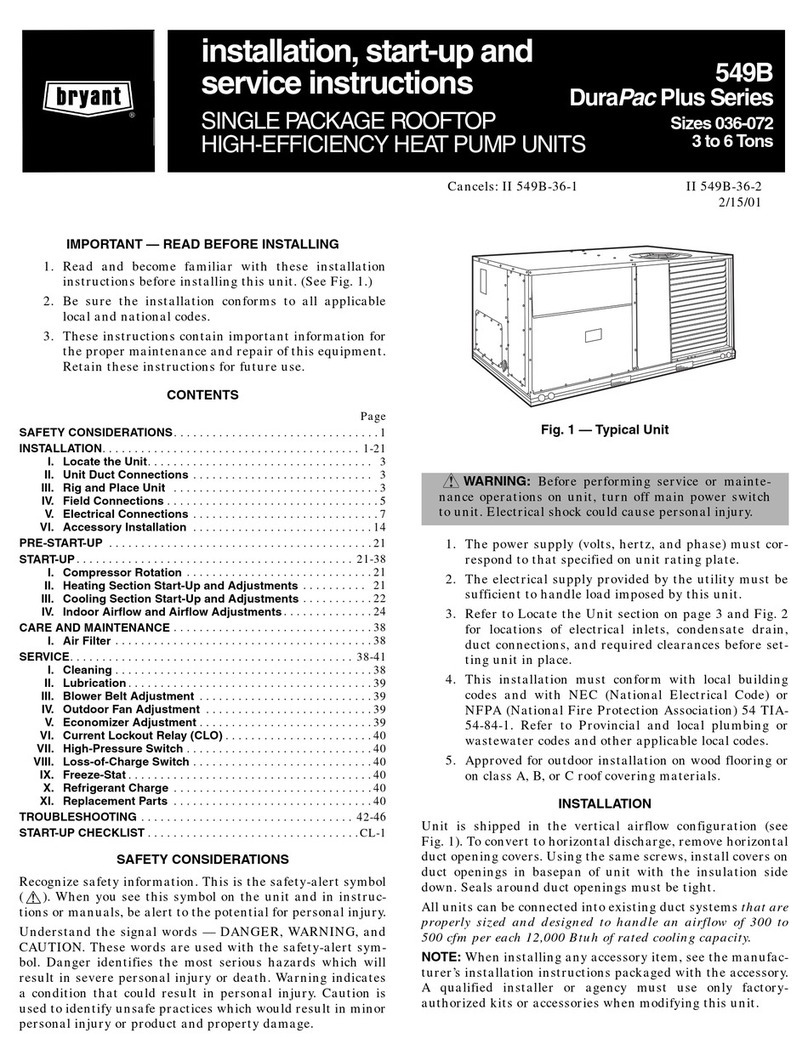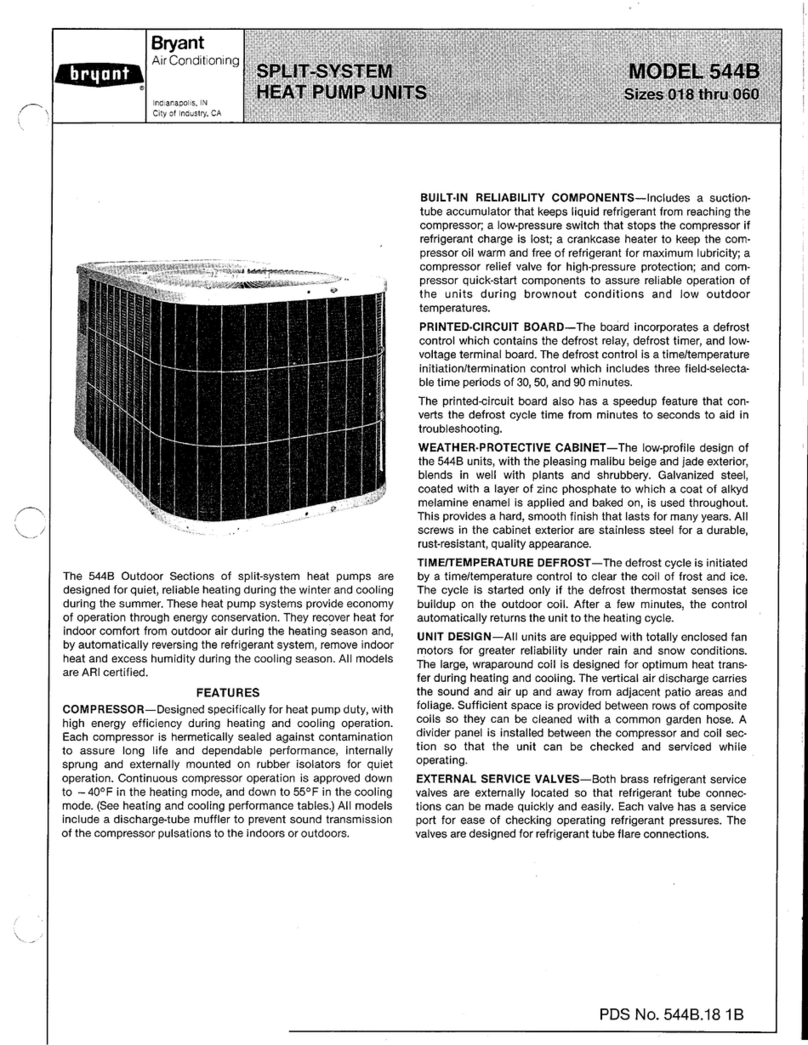
7
Heating Check Chart Procedure −Heating Mode
To check system operation during heating cycle, refer to the
HeatingCheck Chart on outdoor unit. This chart indicates whether
a correct relationship exists between system operating pressure and
air temperature entering indoor and outdoor units. If pressure and
temperature do not match on chart, system refrigerant charge may
not be correct. Do not use chart to adjust refrigerant charge.
NOTE: When charging is necessary during heating season, charge
must be weighed in accordance with unit rating plate ±0.6 oz./ft. of
3/8−in. liquid line above or below 25 ft. (7.6 m) respectively.
To calculate additional charge required for a 35−ft. (11 m) line set:
35 ft. (10.6 m) −25 ft. (7.6 m) = 10 ft. X 0.6 oz./ft. = 6 oz. of
additionalcharge.
CHECK CHARGE −UNITS WITH TXV COOLING
METERING DEVICE
Factory charge amount and desired subcooling are shown on unit
rating plate. Additional subcooling may be required to achieve
optimal heating performance based on the installed indoor unit.
(seeTable 1).
Charging method is shown on information plate inside unit. For
TXV, use subcooling method. For piston, use superheat method.
To properly check or adjust charge, conditions must be favorable
for subcooling or superheat charging. Favorable conditions exist
when the outdoor temperature is between 70°F and 100°F
(21.11°C and 37.78°C), and the indoor temperature is between
70°F and 80°F (21.11°C and 26.67°C). Follow the procedure
below:
Unit is factory charged for 15ft (4.57 m) of lineset. Adjust charge
by adding or removing 0.6 oz/ft (.018 kg/m) of 3/8 liquid line
above or below 15ft (4.57 m) respectively. For standard refrigerant
line lengths (80 ft/24.38 m or less), allow system to operate in
cooling mode at least 15 minutes. If conditions are favorable,
check system charge by super heat method for fixed metering
device and subcooling method for TXV. If any adjustment is
necessary, adjust charge slowly and allow system to operate for 15
minutes to stabilize before declaring a properly charged system.
Referto Table 1 for additional subcooling required.
If the indoor temperature is above 80°F (26.67°C), and the outdoor
temperature is in the favorable range, adjust system charge by
weight based on line length and allow the indoor temperature to
drop to 80°F (26.67°C) before attempting to check system charge
by subcooling method as described above.
If the indoor temperature is below 70°F (21.11°C), or the outdoor
temperature is not in the favorable range, adjust charge for line set
length above or below 15ft (4.57 m) only. Charge level should then
be appropriate for the system to achieve rated capacity. The charge
level could then be checked at another time when the both indoor
and outdoor temperatures are in a more favorable range.
NOTE: If line length is beyond 80 ft (24.38 m) or greater than 20
ft (6.10 m) vertical separation, See Residential Piping and Long
Line Guideline for special charging requirements.
Units with Indoor Pistons
Units installed with indoor pistons require charging by the
superheat method. The following procedure is valid when indoor
airflowis within ±21% of its rated CFM.
1. Operate unit a minimum of 10 minutes before checking
charge.
2. Measuresuction pressure by attaching an accurate gauge to
suction valve service port.
3. Measure suction temperature by attaching an accurate
thermistortype or electronic thermometer to suction line at
servicevalve.
4. Measure outdoor air dry−bulb temperature with
thermometer.
5. Measure indoor air (entering indoor coil) wet−bulb
temperaturewith a sling psychrometer.
6. Refer to Table 2. Find outdoor temperature and evaporator
enteringair wet−bulb temperature. At this intersection, note
superheat.
7. Refer to Table 3. Find superheat temperature located in item
6 and suction pressure. At this intersection, note suction line
temperature.
8. If unit has a higher suction line temperature than charted
temperature, add refrigerant until charted temperature is
reached.
9. If unit has a lower suction line temperature than charted
temperature,reclaim refrigerant until charted temperature is
reached.
10. When adding refrigerant, charge in liquid form into suction
serviceport using a flow−restricting device.
11. If outdoor air temperature or pressure at suction valve
changes, charge to new suction line temperature indicated
on chart.
MAINTENANCE
!WARNING
ELECTRICAL SHOCK HAZARD
Failure to follow this warning could result in personal
injury or death.
Before installing, modifying, or servicing system, main
electrical disconnect switch must be in the OFF
position. There may be more than 1 disconnect switch.
Lock out and tag switch with a suitable warning label.
LUBRICATION
Compressor
Compressorcontains factory oil charge; replace oil when lost. Use
Mobile 3MA−POE oil.
CLEANING COILS
Coil should be washed out with water or blown out with
compressor air. Note that the blow−thru design causes dirt and
debris to build up on the inside of the coils. Clean coil annually or
as required by location and outdoor air conditions. Inspect coil
monthly and clean as required. Fins are not continuous through
coil sections. Dirt and debris may pass through first section,
become trapped between the row of fins and restrict condenser
airflow. Use a flashlight to determine if dirt or debris has collected
betweencoil sections. Clean coil as follows:
1. Turn off unit power.
2. Using a garden hose or other suitable equipment, flush coil
from the outside to remove dirt. Be sure to flush all dirt and
debris from drain holes in base of unit. Fan motors are wa-
terproof.
